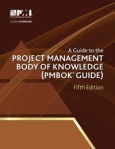The PMP exam is now updated with the fifth edition of the PMBOK guide. It is very important to take that into consideration if you are thinking of taking the exam from now on.
In general, the adjustments are great, I love them! Amongst other things, the processes are more consistent amongst each-other, and have been adjusted to make sure we concentrate on the values and goals of the organizations while planning. In addition, some elements are less confusing, so it’s easier to understand the logic between processes and ITTOs.
Here is a summary of the changes:
- A 10th knowledge area was added: Stakeholder management;
- 5 new processes going from 42 to 47; and
- 13 processes were changed, moved, or both.
Integration management:
- “Direct and manage project execution” is now named “Direct and manage project work”.
Scope management:
- Now has 6 processes;
- “Plan scope management” is a new process; and
- “Verify scope” is now named “Validate scope”.
Time management:
- Now has 7 processes; and
- “Plan schedule management” is a new process.
Cost management:
- Now has 4 processes; and
- “Plan cost management” is a new process.
Quality management:
- “Plan quality” is renamed “Plan quality management”; and
- “Perform quality control” is renamed “Control quality”.
Human resource management:
- “Develop human resource plan” is renamed “Plan human resource management”.
Communication management:
- 2 processes were moved (Identify stakeholders, Manage stakeholder expectations);
- “Distribute information” is renamed “Manage communications”;
- “Plan communications” is renamed “Plan communications management”; and
- “Report performance” is renamed “Control communications”.
Risk management:
- “Monitor and control risks” is renamed “Control risks”.
Procurement management:
- “Plan procurements” is renamed “Plan procurement management”; and
- “Administer procurements” is renamed “Control procurements”.
Stakeholder management:
- Completely new knowledge area with 4 processes;
- “Identify stakeholders” was moved from communication area;
- “Manage stakeholders expectations” is renamed to “Manage stakeholder engagement” and moved from the communication area; and
- The two other processes are “Plan stakeholder management” and “Control stakeholder engagement”.
The new knowledge area focuses on one of the most important element of project management (in my opinion at least), and manages stakeholders, their expectations, and engagement. It used to be part of a simple process inside the communication area, but now, it is much more elaborate and receives the attention it deserves.
Data-Information-Knowledge-Wisdom model:
They clarified some terms by aligning them with the D-I-K-W model to reduce confusions between “Work performance measurements” and “Work performance information” and how they are used.
It now becomes “Work performance data”, “Work performance information”, and “Work performance reports”. At first glance it may seem more complicated but their relationship with the processes are more logical and easier to understand.
Agile project management:
This is becoming more and more popular, and the PMBOK guide now mentions it in 4 areas:
- Adaptive project life cycle;
- Enterprise environmental factors;
- 2 tools inside the “Collect requirements” process; and
- “Control schedule” process.
It’s not much, but it’s better than nothing. This is because PMI offers a completely different certification called the Agile Certified Practitioner (ACP).
And that’s it! For those who have studied the 4th edition, what do you think of the changes?












